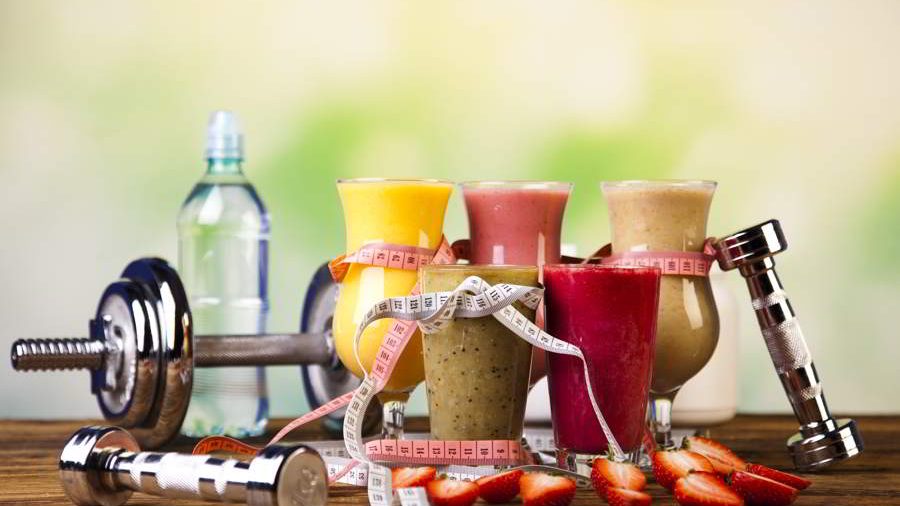Last Updated on September 6, 2020 by Nick

Red fruits and vegetables on a wooden table
All red fruits and vegetables contain a high content of various antioxidants which are essential for neutralizing the free radicals. The free radicals are unstable molecules that cause damage to cellular structures.
The cell damage can be cause for cancer, heart disease, and many other chronic diseases.
By eating a vast variety of the red fruits and vegetables, you can boost your blood levels of antioxidants and obtain their remarkable health benefits.
For those of you who want to take a glance at our favorite red fruits and vegetables, here’s the ultimate list:
1 Disclaimer: In the name of full transparency, please be aware that this blog post contains affiliate links and any purchases made through such links will result in a small commission for us (at no extra cost for you). Being a part of these affiliate sales networks makes it possible to fund our website. We only recommend products that our authors consider to be helpful and useful and we always have our readers’ best interest at heart.
Contents
Our Picks for the 13 Healthiest Red Fruits
- Red Apples
- Blood Oranges
- Cherries
- Cranberries
- Red Grapes
- Red Grapefruit
- Red Pears
- Pomegranates
- Raspberries
- Strawberries
- Watermelon
- Schizandra
- Goji berries
Our Picks for the 13 Healthiest Red Vegetables
- Red tomatoes
- Beets
- Red cabbage
- Red bell pepper
- Radishes
- Red chili pepper
- Red leaf lettuce
- Red onion
- Red potatoes
- Red swiss chard
- Red amaranth
- Rhubarb
Our Recommended Reads:
- Superfood Smoothies: 100 Delicious, Energizing & Nutrient-dense Recipes
- Ripe: A Fresh, Colorful Approach to Fruits and Vegetables
Below I go into details how the red fruits and vegetables could be beneficial and significant for your health and why you may consider adding them to your diet.
Health Benefits and Major Nutrients of Red Fruits
1. Red Apples
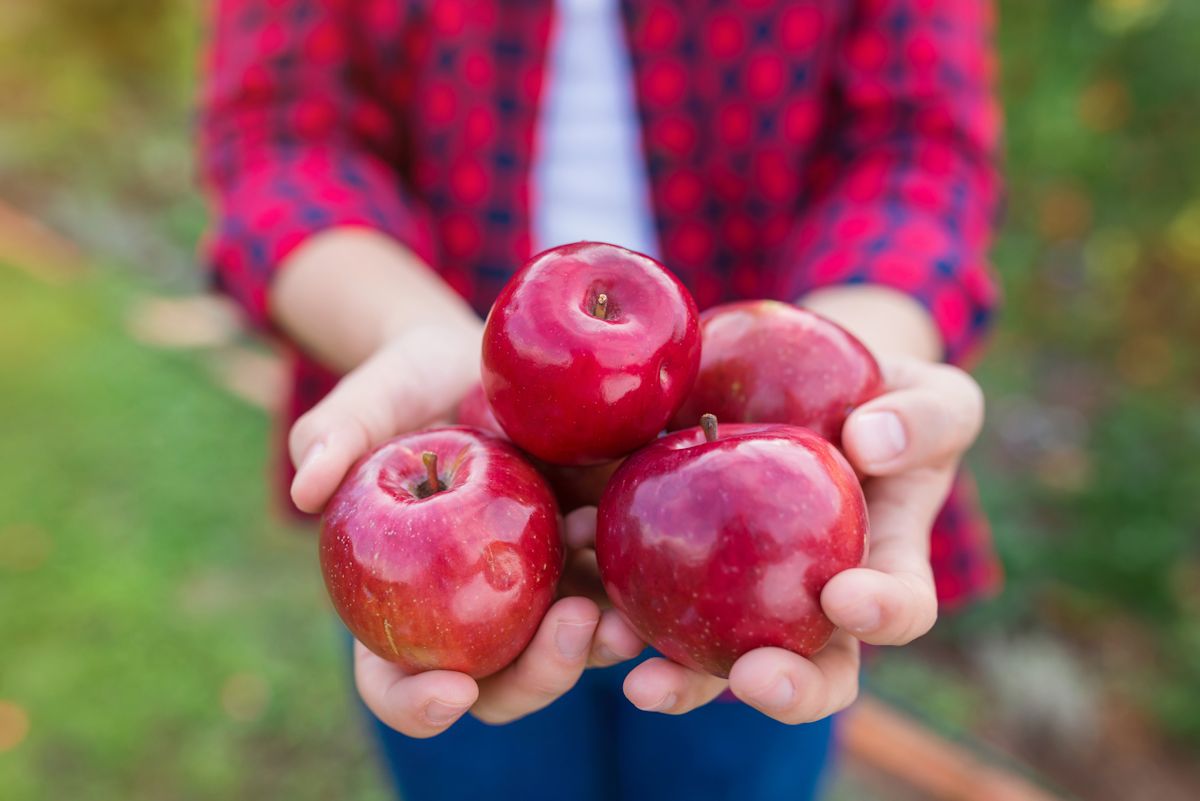
“An apple a day keeps the doctor away.” They are healthy, nutritious fruit with numerous studies to support their benefits. Apples are high in fiber (4.4g which is 17% of the RDV) and water which can aid weight loss.
Specifically, apples contain a high content of soluble fiber which can help in lowering the “bad” blood cholesterol levels. Only one medium apple contains 8.4 mg of Vitamin C which is 14% of the daily recommended value.
According to studies, due to their polyphenol antioxidant content, eating apples is linked to a lower risk of type 2 diabetes. The apple skin contains quercetin, a flavonoid which can help keep the immune system strong and reduce inflammation.
2. Blood Oranges
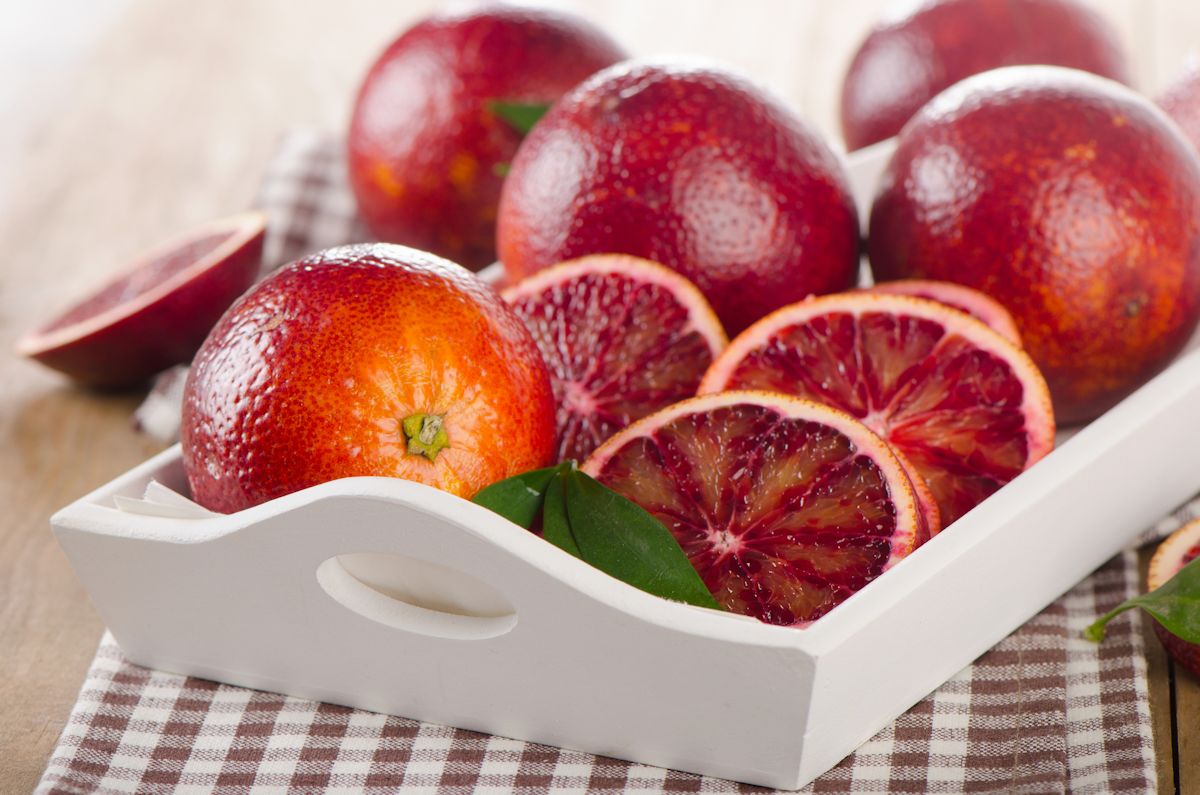
Besides the fact that blood oranges are so darn tasty, they are also rich in essential nutrients. Оne medium blood orange contains 120% of the RDV or 72mg. They are also rich in Vitamin A and dietary fiber.
The red pigmentation of oranges is due to anthocyanin, a molecule found in many red fruits and vegetables.
Elementary evidence suggests that some anthocyanins have anti-oxidant and anti-inflammatory properties.
Blood oranges also are rich in folic acid (Vitamin B9) which helps the body to produce new cells or more specifically, the formation of red cells depends on the appropriate levels of this vitamin.
3. Cherries
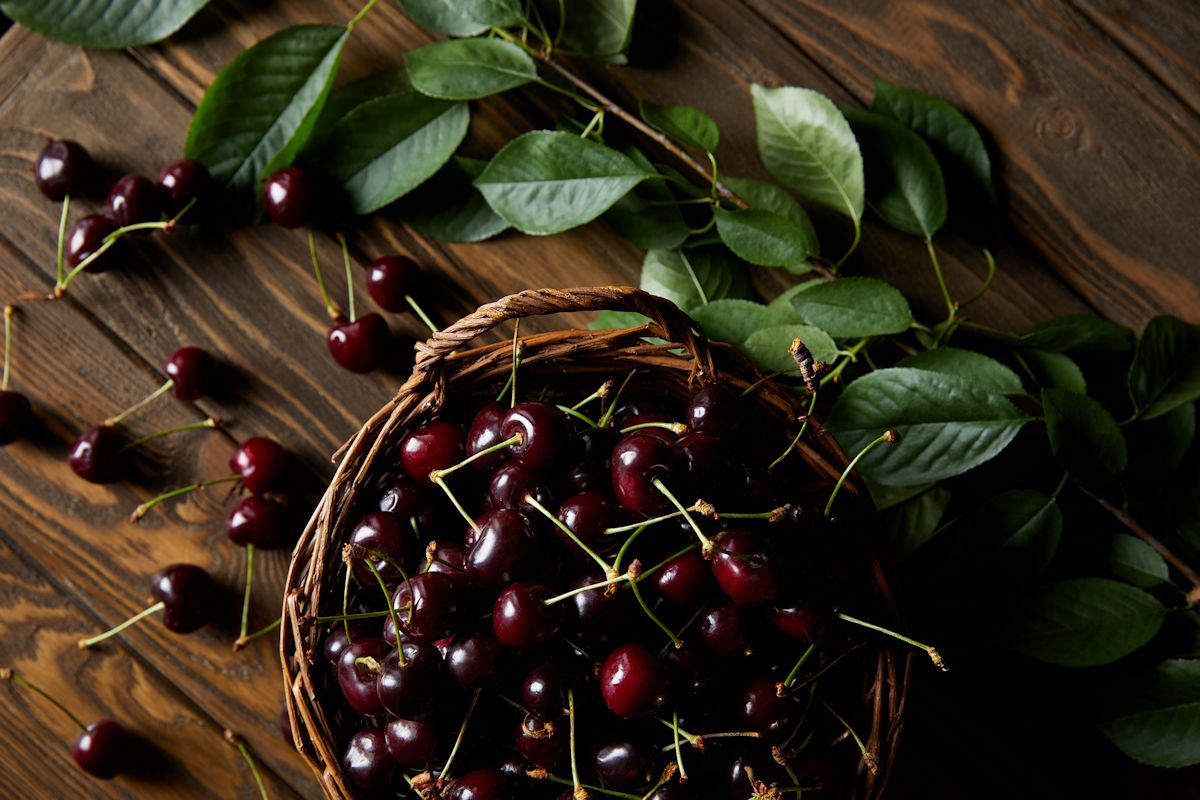
Who doesn’t love fresh cherries or tart cherries juice? They are super delicious, and they are very healthy. Numerous studies show that the intake of cherry juice before intense physical exercise may reduce muscle strength loss and could speed up muscle recovery.
In another study, the consumption of tart cherry juice resulted in increased melatonin levels which helped people to improve sleep quality. Research also links cherries with reduced inflammatory and oxidative stress due to their high content of anthocyanin.
4. Cranberries
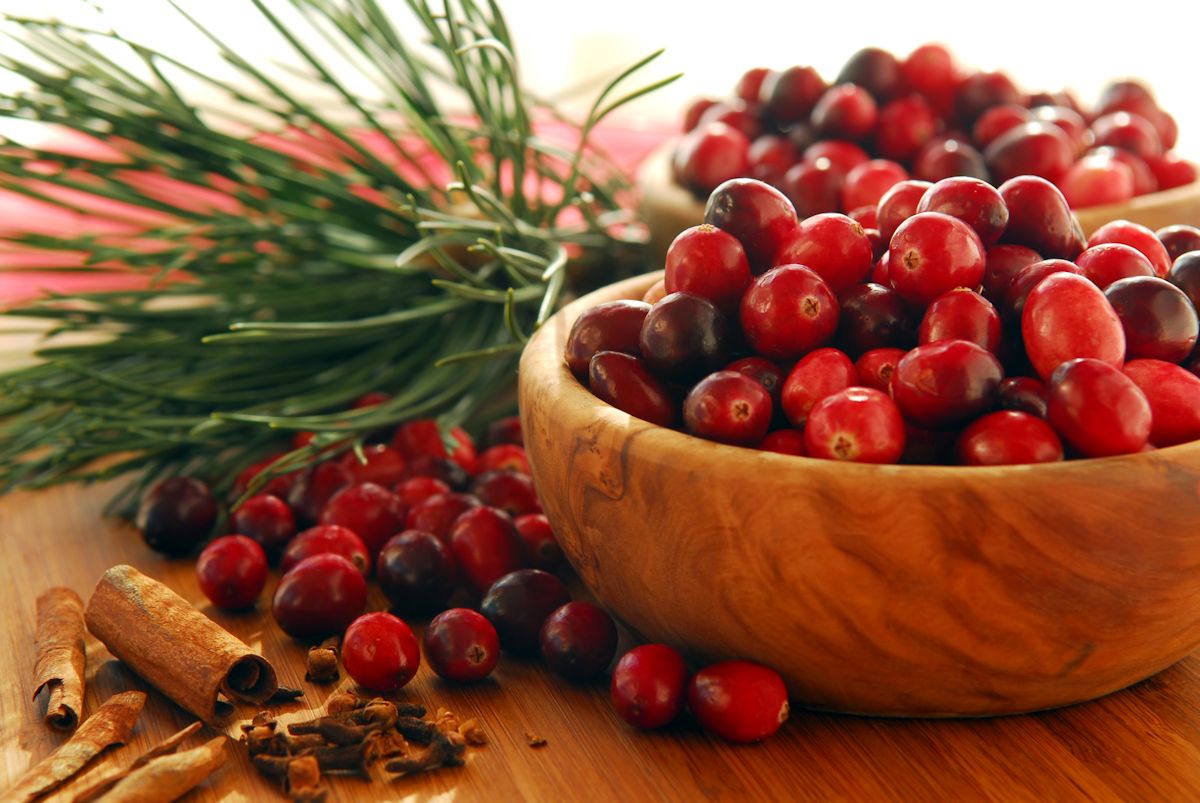
The antioxidants found in cranberries make them one of the healthiest fruits. Studies indicate that consuming cranberries may reduce urinary tract infections, decrease inflammation and improve immune function.
Because of the fruit’s ability to balance bacteria in the body, the cranberries are good for digestive health, and they also aid in the absorption of the nutrients.
5. Red Grapes
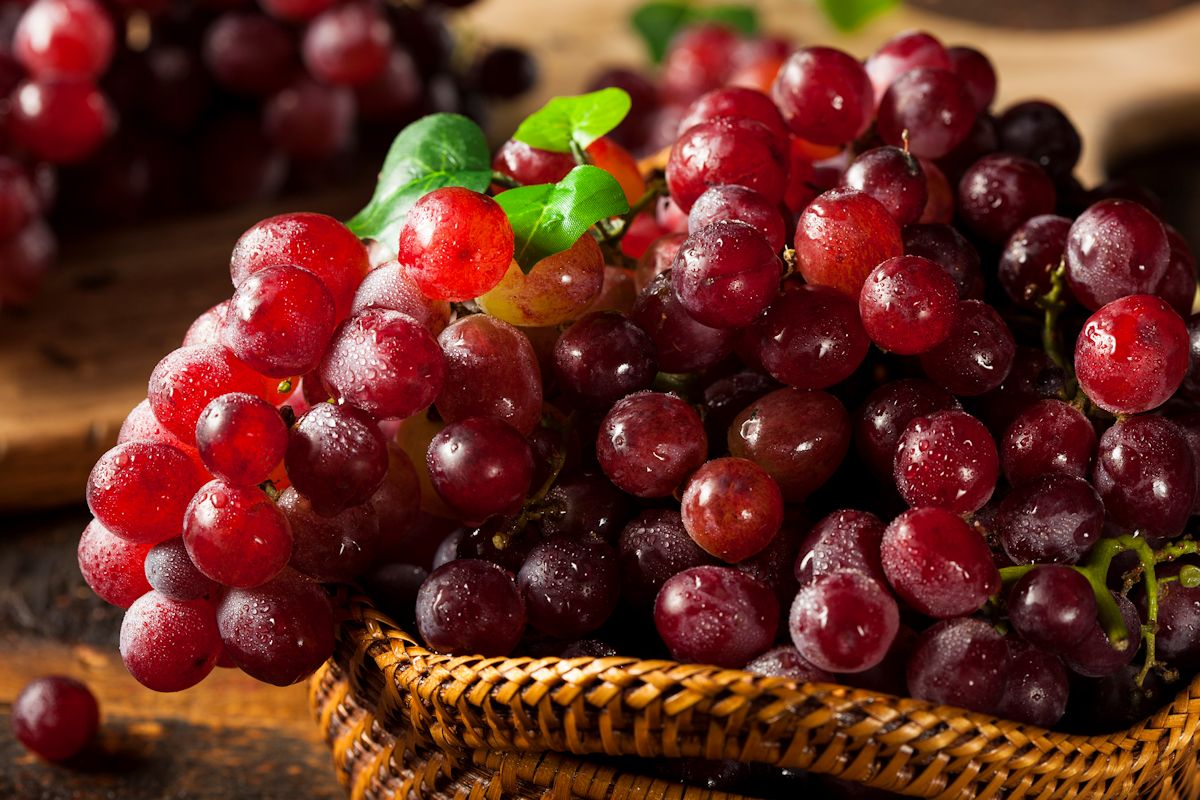
In addition to good genes, longevity is also linked to your diet and lifestyle choices. Resveratrol, found in grapes researchers connect it with increased longevity.
On the other side, due to the high amount of phytonutrients in grapes, they offer better blood insulin regulation.
Grape flavonoids can improve memory function in older adults with mild cognitive impairment by preventing neurodegenerative processes.
6. Red Grapefruit
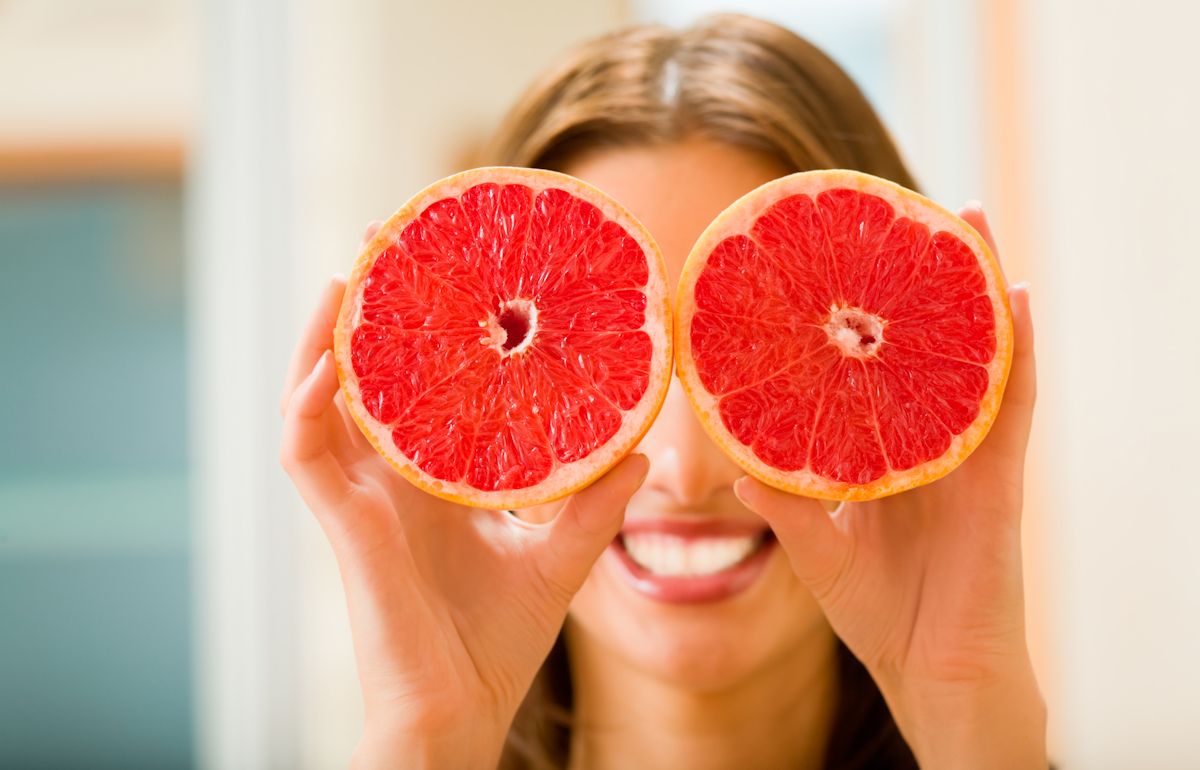
Did you know that grapefruit is one of the lowest-calorie fruit? This fruit is incredibly nutritious. One medium-sized grapefruit contains 64% of the RDV for Vitamin C, and 28% of the RDV for Vitamin A.
Because of the high content of Vitamin C grapefruits can aid in improving or maintaining your immune system strong. Also, studies show that eating grapefruit before a meal could help weight loss.
7. Red Pears
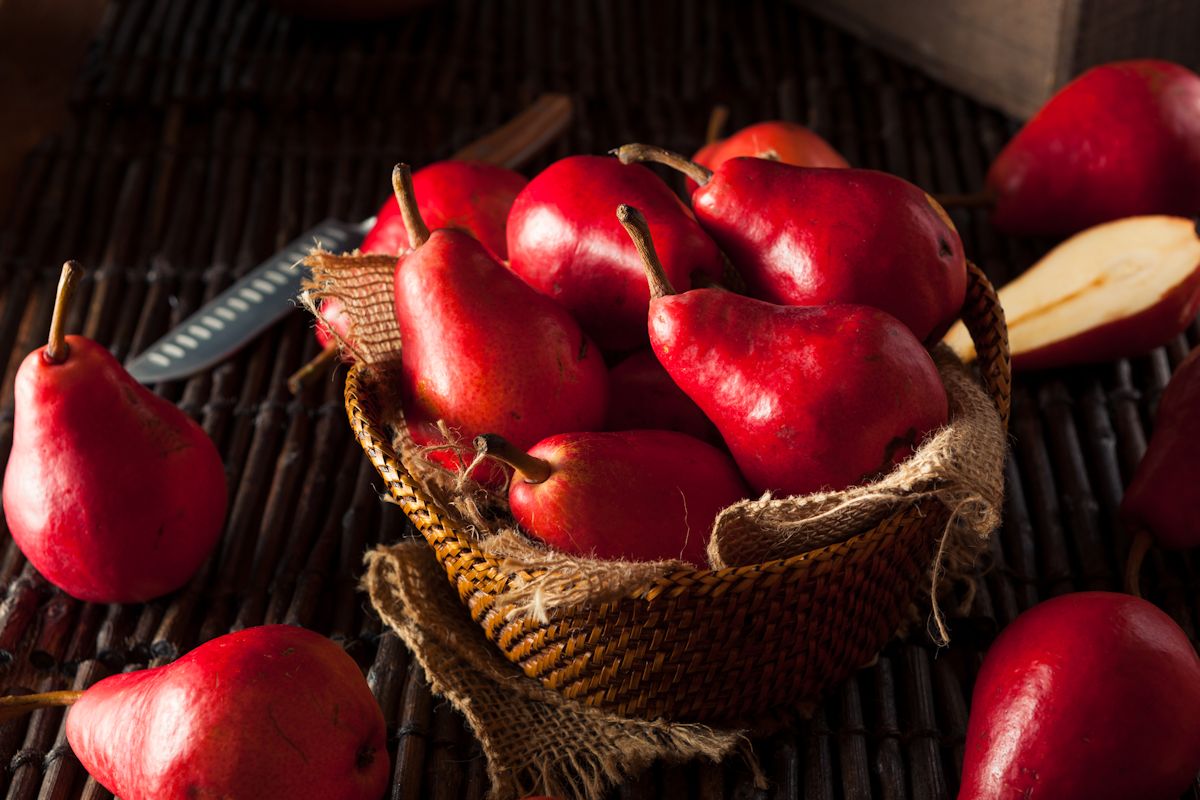
What’s not to like about pears? Pears are high in fiber, particularly pectin fiber which is water soluble and helps in lowering cholesterol. Pectin attaches to fatty substances in the digestive system, including cholesterol and leads to their elimination.
This process helps the body to detox and improves the digestive health.
Like all other red fruits, they contain a high amount of antioxidants.
8. Pomegranates
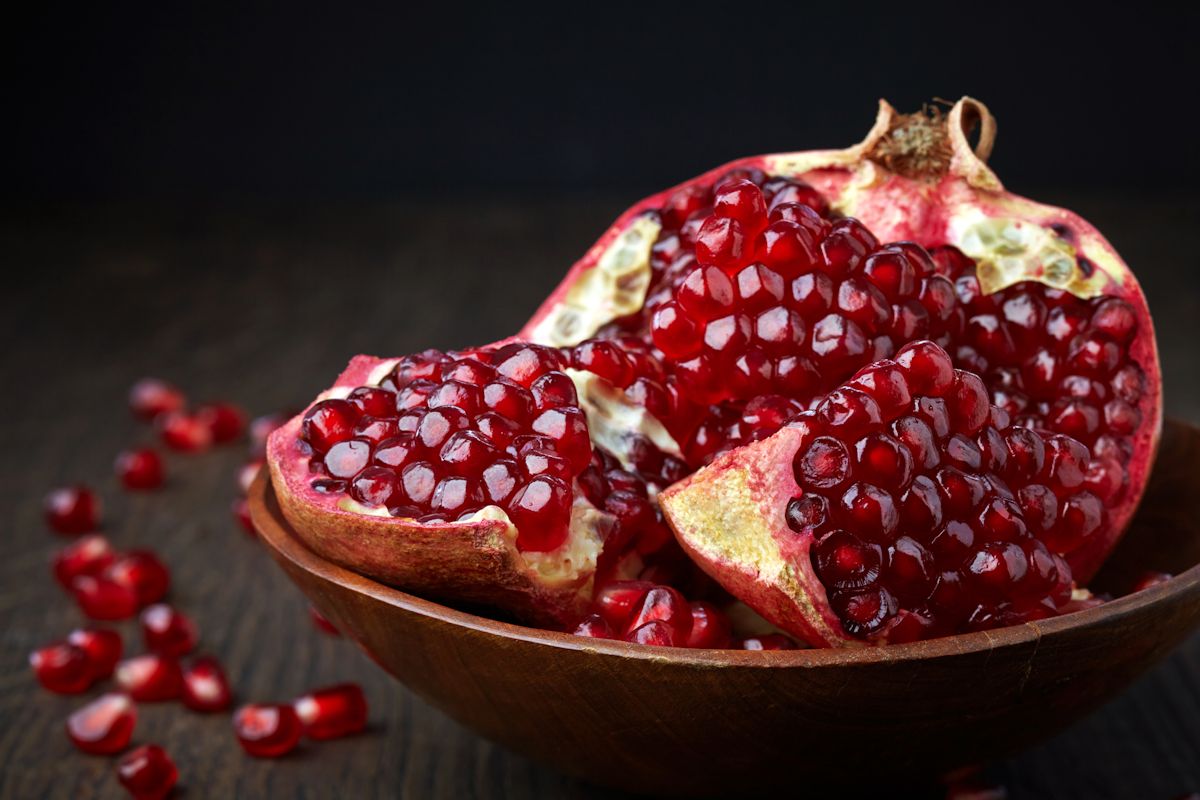
Without exaggerating pomegranates could be one of the most powerful superfoods. They contain punicic acid and punicalagin which are responsible for their health benefits.
The punicalagin’s have been shown to reduce inflammation which is one of the leading causes of many life-threatening diseases.
Also, researchers link pomegranate with boosting cognitive function. On the other hand, according to study, 1g of pomegranate before exercise increased the blood flow and improved the exercise performance of young athletes, which makes pomegranates good natural pre-workout alternative.
9. Raspberries
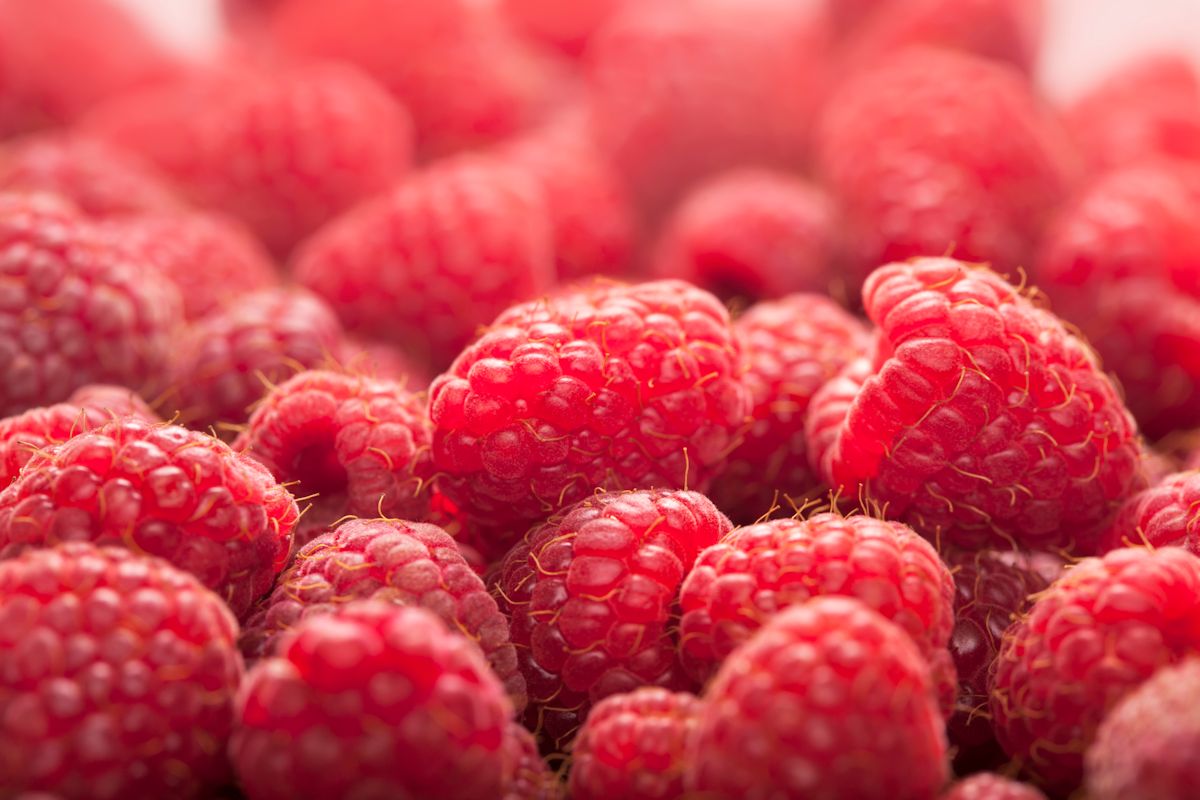
What makes raspberries so exceptional? The phytonutrients in raspberries are what makes their nutrition extraordinary.
The anthocyanins with their anti-inflammatory properties and the polyphenols with their ability to narrow the peripheral arteries make them immensely efficient for boosting heart health.
Besides the high fiber content (8g or 32% of the RDV in just one cup), the raspberry ketones and specific nutrients rheosmin could help in managing weight.
The high Vitamin C content (53% of the RDV) and the presence of the antioxidant carotenoids and quercetin can help reduce the signs of aging by fighting free radicals.
10. Strawberries
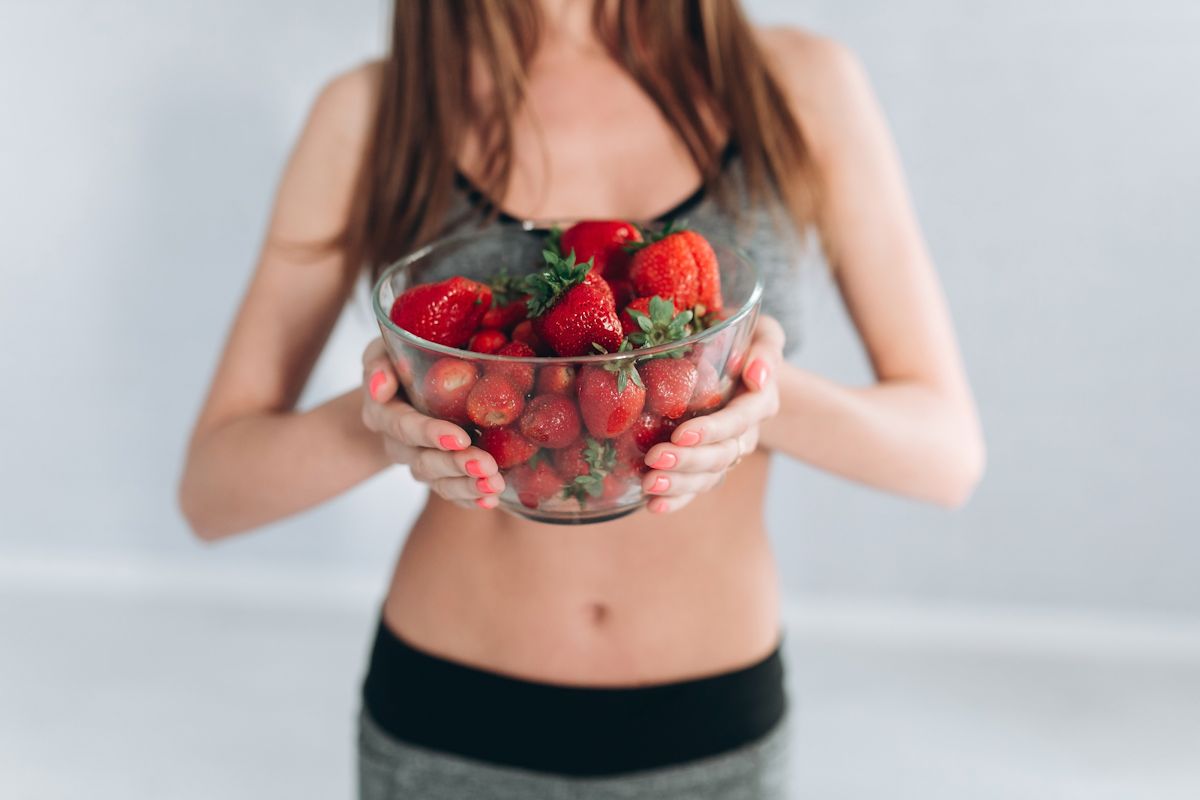
We know that strawberries are super tasty, but they are also incredibly nourishing. They are a great source of manganese, Vitamin C, potassium and Vitamin B9 (folate). The bright red color is due to pelargonidin, the major anthocyanin in strawberries.
Because of their high content of antioxidants they can help in lowering blood pressure and reducing oxidative stress. Moreover, strawberries can help in regulating the blood sugar. You can’t go wrong with strawberries!
11. Watermelon

After a long, hot summer day there’s nothing more refreshing than grabbing a slice of cold watermelon. The watermelon is packed with great nutrients including citrulline and lycopene.
These two nutrients have been linked to improved metabolic health, lowered blood pressure and decreased muscle soreness after exercise.
The high content of water makes the watermelon great for maintaining hydration.
12. Schizandra
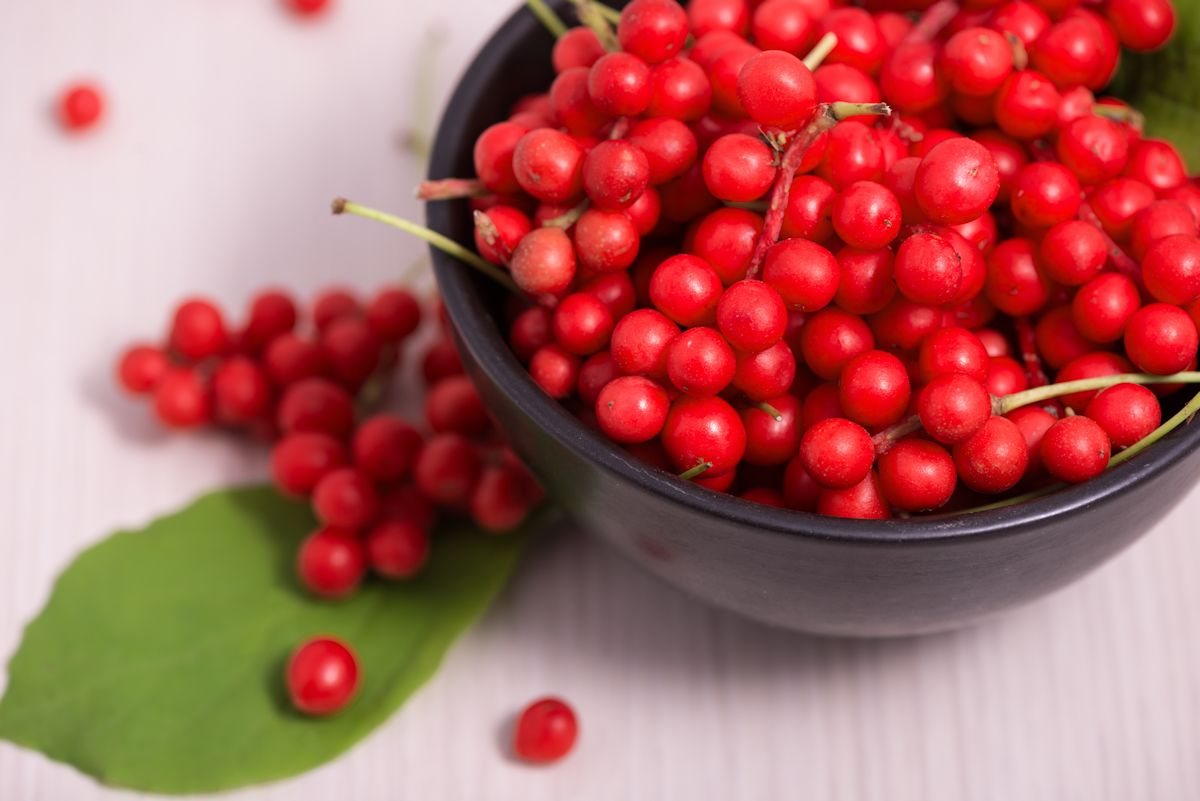
The Schizandra berry most often people use it as extract or powder form which you can add to smoothies. This fruit has been used in Chinese medicine for a wide range of health-related issues.
According to a recent study, Schisandrin B, a bioactive compound present in the Schizandra could have a positive effect on Alzheimer’s. Another research shows that Schizandra extract helped ease the menopausal symptoms in women.
13. Goji Berries
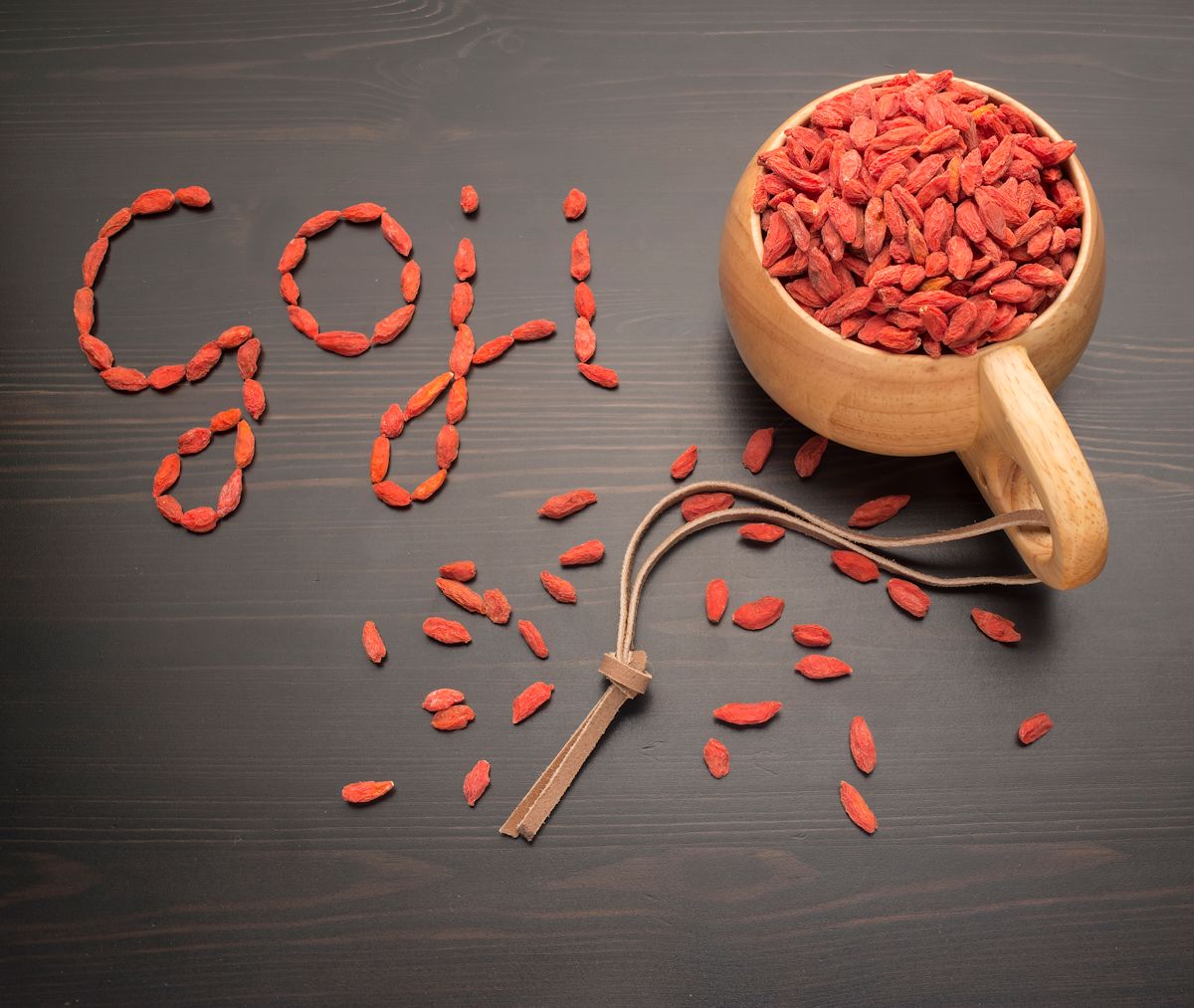
If you are searching for a new, unusual and nutritious food to include in your diet, goji berries might be a perfect choice. They have a sweet taste, but they are low in calories and sugar which makes them perfect addition to your healthy diet.
They have a high content of antioxidants, especially zeaxanthin which makes them fantastic for eye and skin health.
Goji berries tend to be more expensive than other berries, but the recent studies show that they are fantastic superfood which could help increase your quality of sleep, focus, calmness, energy, and athletic performance.
Health Benefits and Major Nutrients of Red Veggies
1. Red Tomatoes
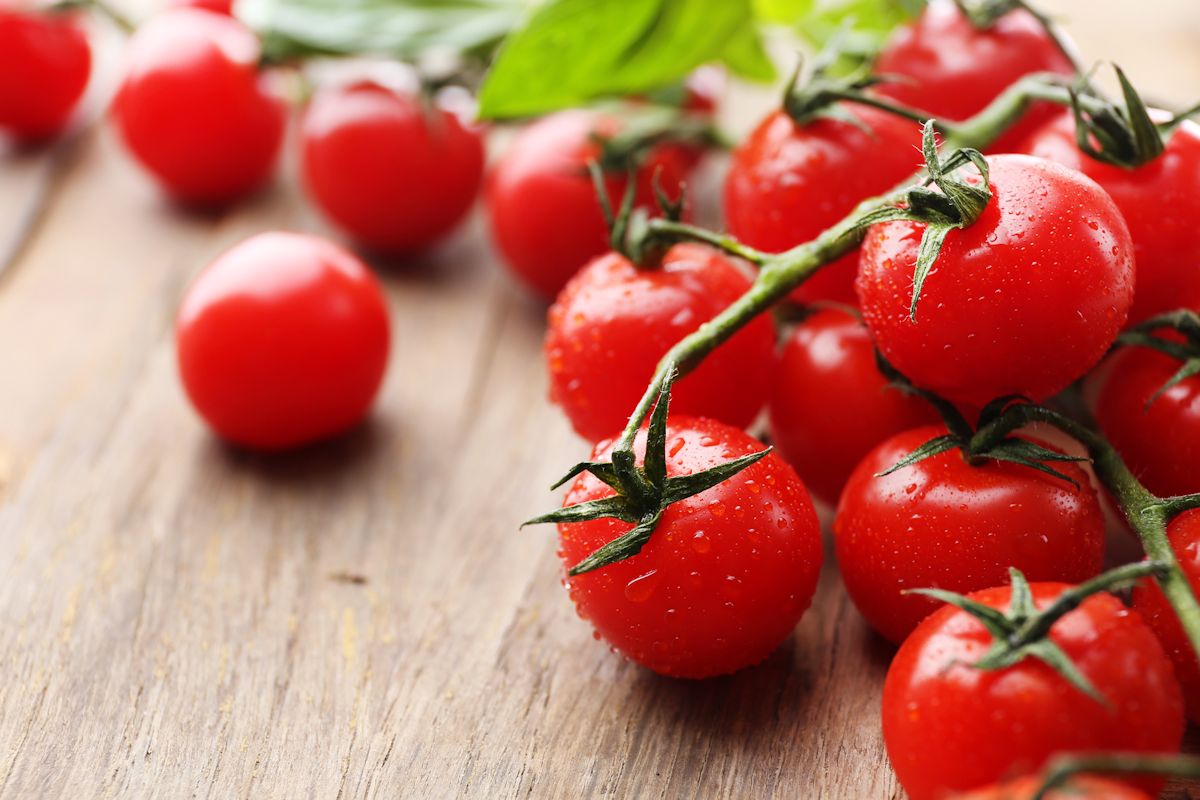
If you want the most exquisite accompaniment to any dish, look no further. Tomatoes are flavorful, healthful vegetable. Even though according to science tomatoes are a fruit, most often they are categorized as a vegetable.
The main compound in tomatoes is lycopene which is researched for its valuable health benefits.
Because the high content of lycopene, tomatoes are considered beneficial for sunburn protection. Furthermore, clinical studies show that lycopene could be helpful in lowering LDL cholesterol.
2. Beets
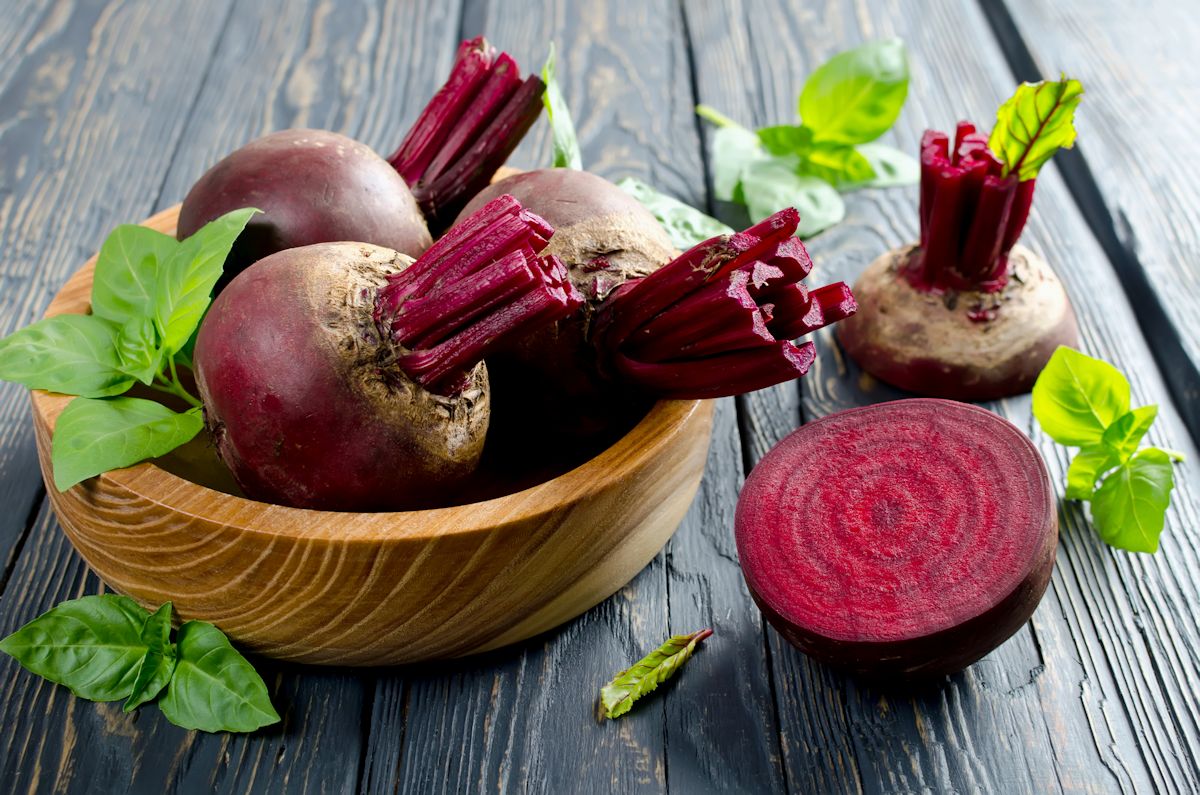
These colorful root veggies are low in calories, but high in essential nutrients as Vitamin B9, Manganese, Iron, Vitamin C. Beets have high levels of nitrates which have been studied for their blood pressure lowering properties.
The nitrates are also linked to increased athletic performance. Beets are an excellent source of dietary fiber, and you can easily include them in your diet.
3. Red Cabbage
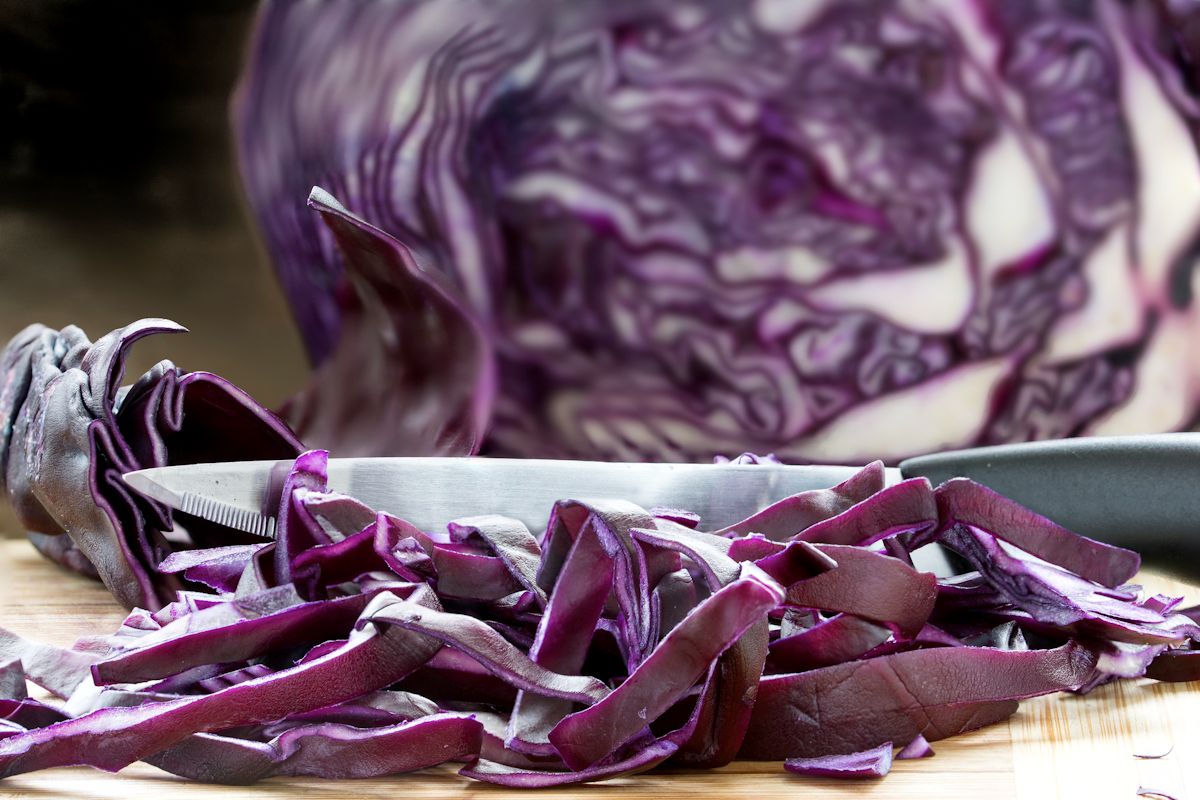
Even though it looks more purple than red, this cabbage has impressive health benefits. The color comes from the presence of anthocyanins. Only one cup of cabbage has 85% of the RDV for Vitamin C, 42% of the RDV for Vitamin K and 20% of the RDV Vitamin A.
Because of the high content of Vitamin C, the cabbage is a great immune system booster and provides protection from oxidative stress. According to one study, the best way to get the most nutrients is if you eat the cabbage raw.
4. Red Bell Pepper
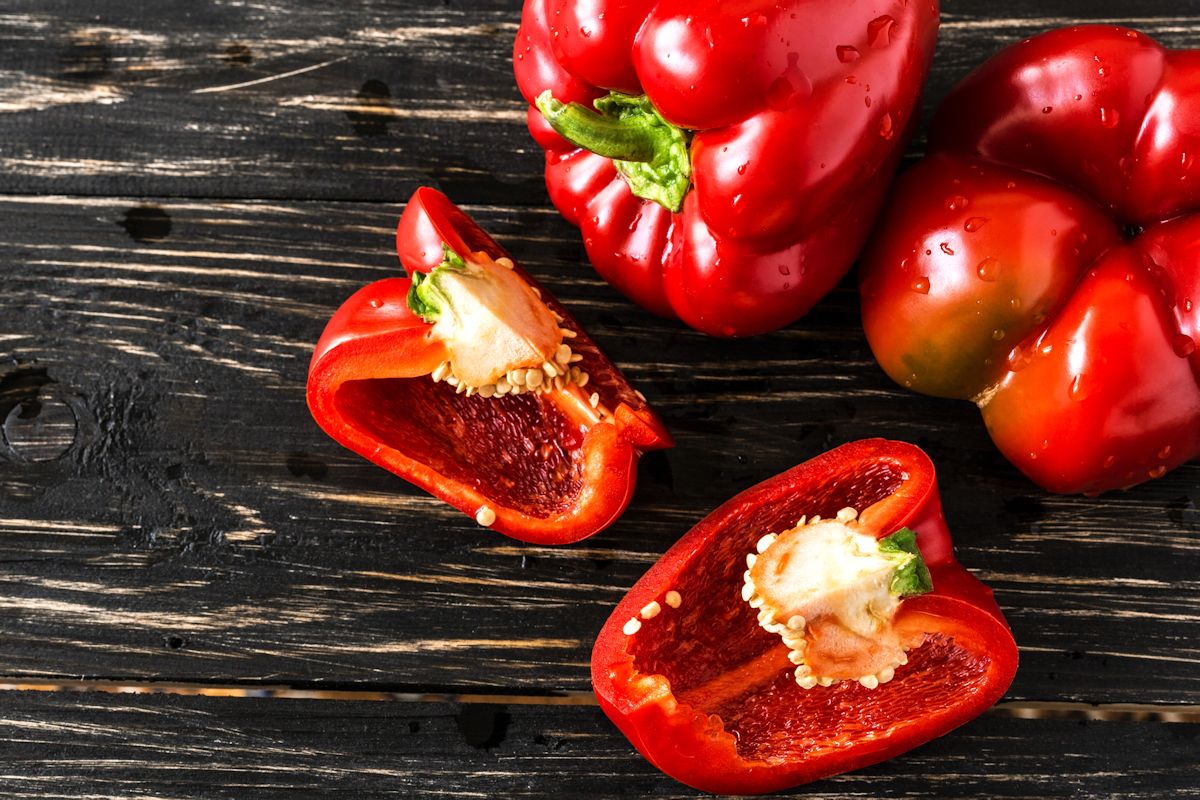
The red bell pepper is one of the most abundant sources of Vitamin C. One medium sized red bell pepper has 169% of the RDV for Vitamin C. The healthy antioxidants available in bell peppers (capsanthin, violaxanthin, lutein, quercetin, luteolin) make them outstanding healthy food.
Consuming bell peppers has been linked to reduced risk of chronic diseases and improved eye health.
5. Radishes
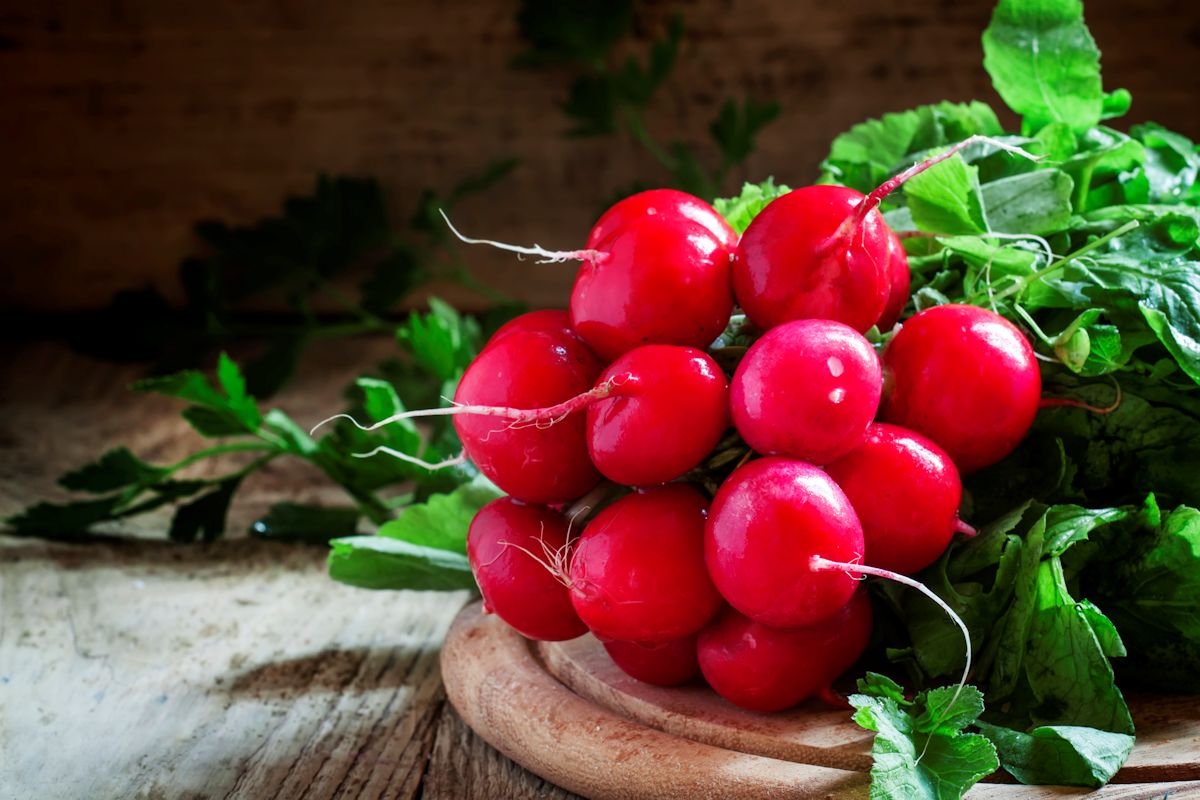
Radishes often underestimated root vegetable, are exceptional for your health. They have only nine calories in half cup which makes them an ideal snack.
The high fiber content in radishes will help you feel full and satisfied, so you can maintain a healthy weight and maybe even shed a few pounds.
They can also help with detoxification, heart and skin health. So don’t wait, snack on radishes and obtain all the wonders of their nutrition.
6. Red Chili Pepper
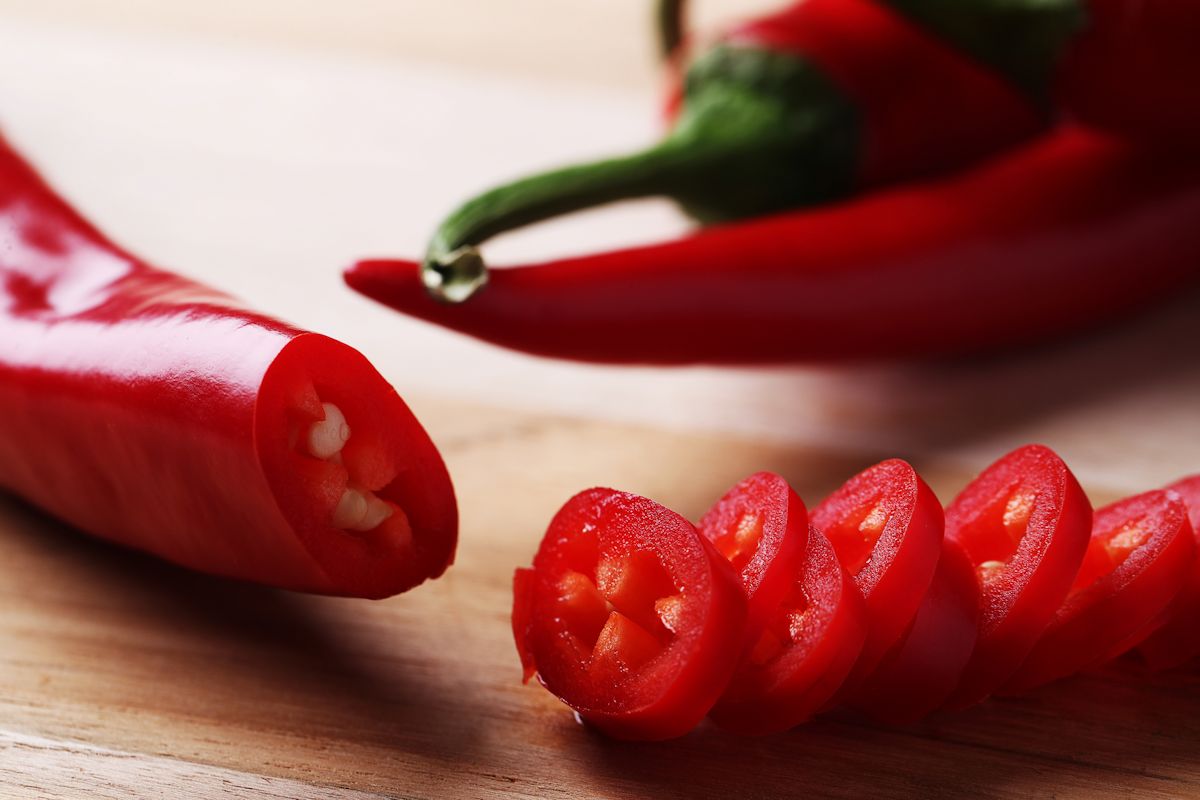
If you eat hot and spicy foods, you are probably doing yourself a favor. The main bioactive compound in red chili peppers is capsaicin which is responsible for the burning taste, but also for the remarkable health benefits.
According to studies, the capsaicin can promote weight loss by increasing fat burning.
Additionally, capsaicin has been researched as pain relief for a cluster headache and as a treatment for psoriasis (application of capsaicin cream).
7. Radicchio
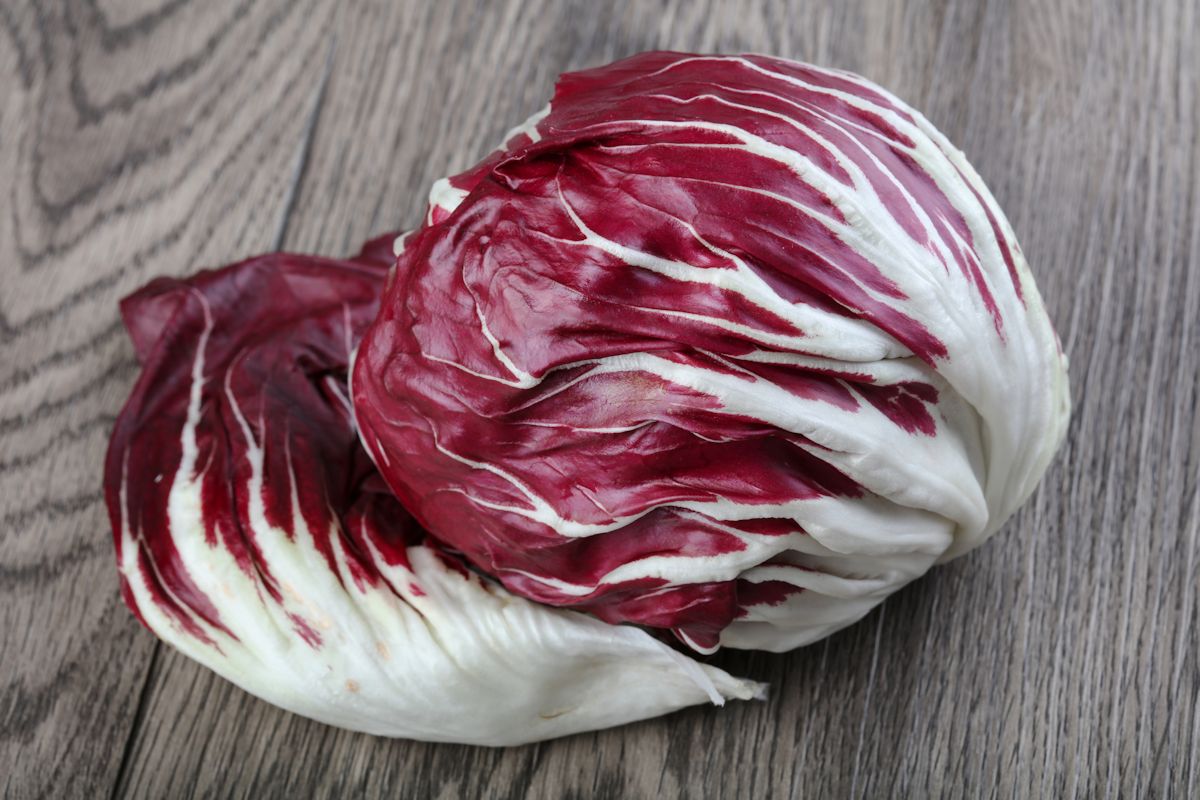
This plant is often confused with red cabbage. It has characteristically bitter taste, and it’s a great flavorful addition to your salads. It’s good for the heart because of the Vitamin K content which helps in prevention of calcification of the arteries.
On the other hand, the high concentration of Vitamin K (128% of the RDV in one serving) in radicchio helps for healthy, strong bones.
8. Red Leaf Lettuce
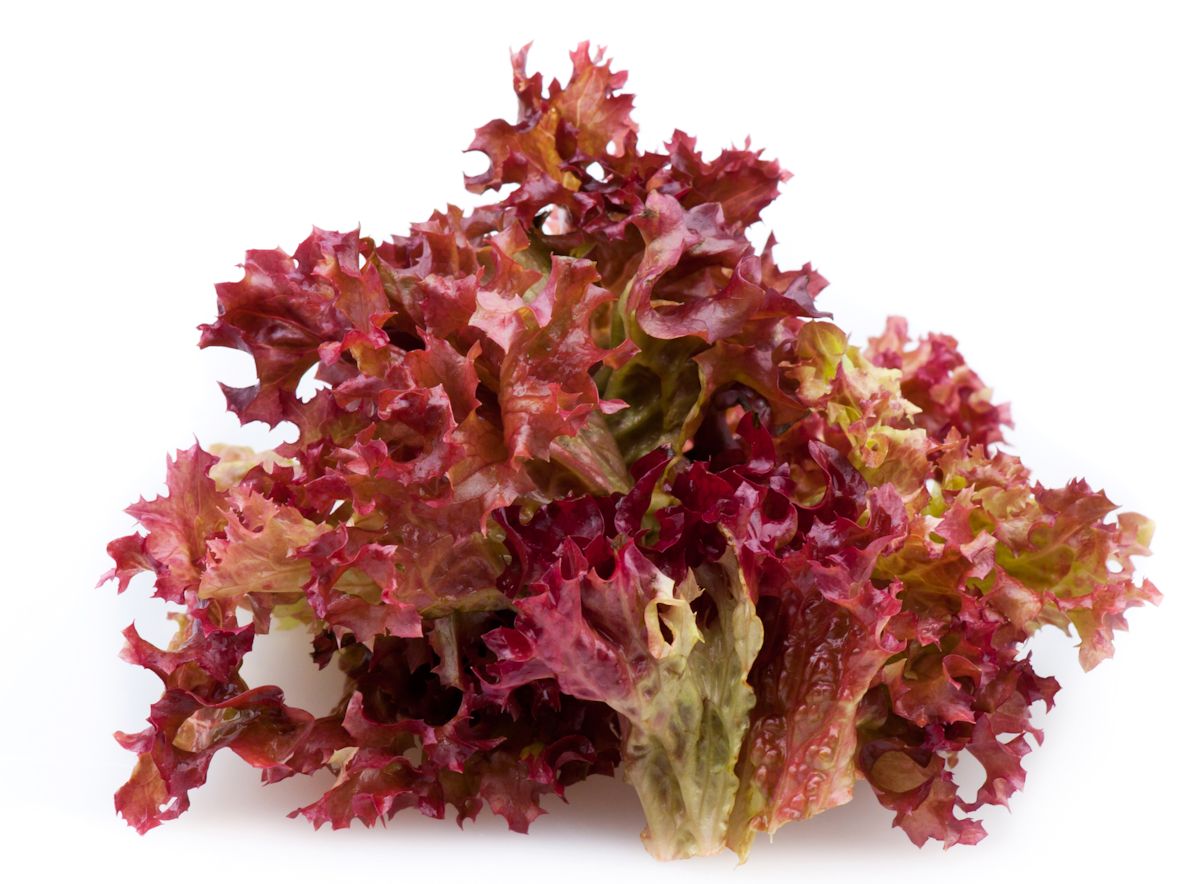
The red leaf lettuce has characteristic red-tinged leaves. This vegetable has a very high concentration of Vitamin A. One serving (85g) has 127% of the RDV for vitamin A. The high content of fiber and water make you feel full which can help in your weight management plan.
9. Red Onion
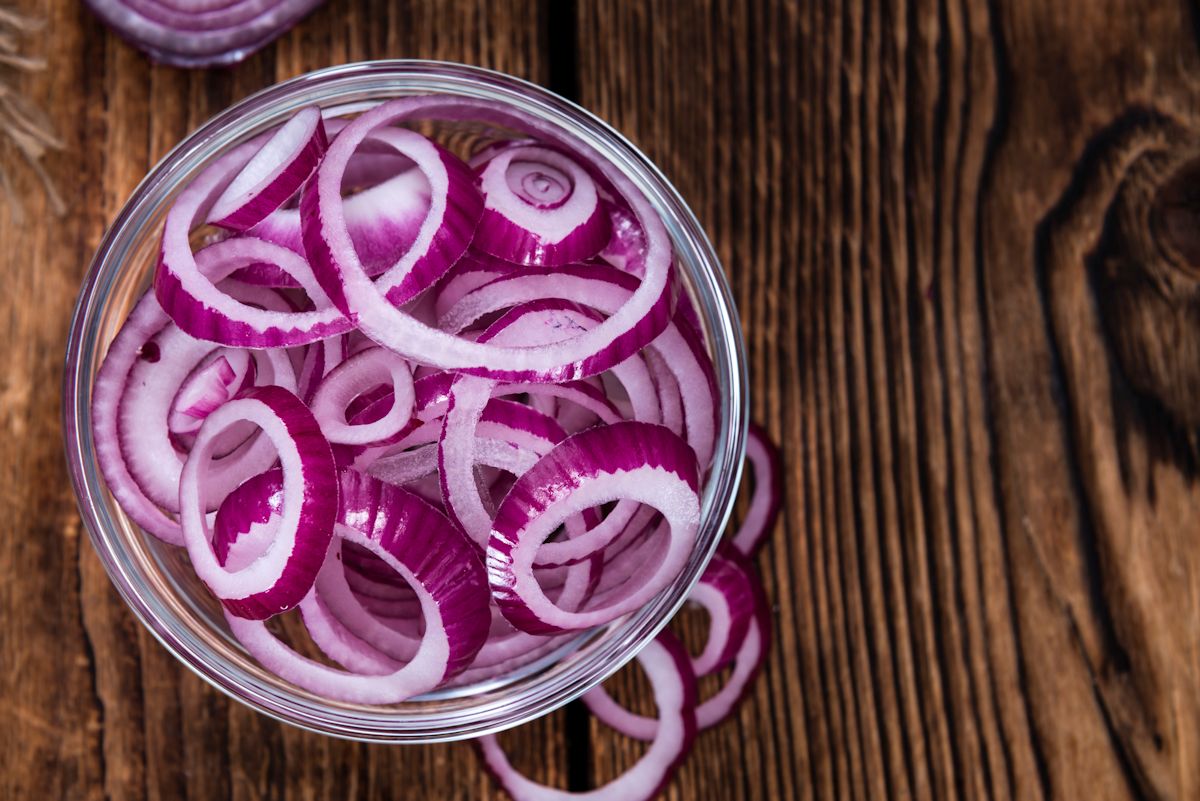
Even though many people dislike their pungent flavor, we cannot deny that onions are packed with antioxidants, making them a powerful vegetable. The sulfur compounds in red onions help for lowering LDL cholesterols which result in improved cardiovascular health.
The red onions are also a good source of chromium which aids in blood sugar regulation. You can reduce the bad breath after eating onions by consuming herbs like parsley, cilantro, rosemary or peppermint.
10. Red Sweet Potatoes
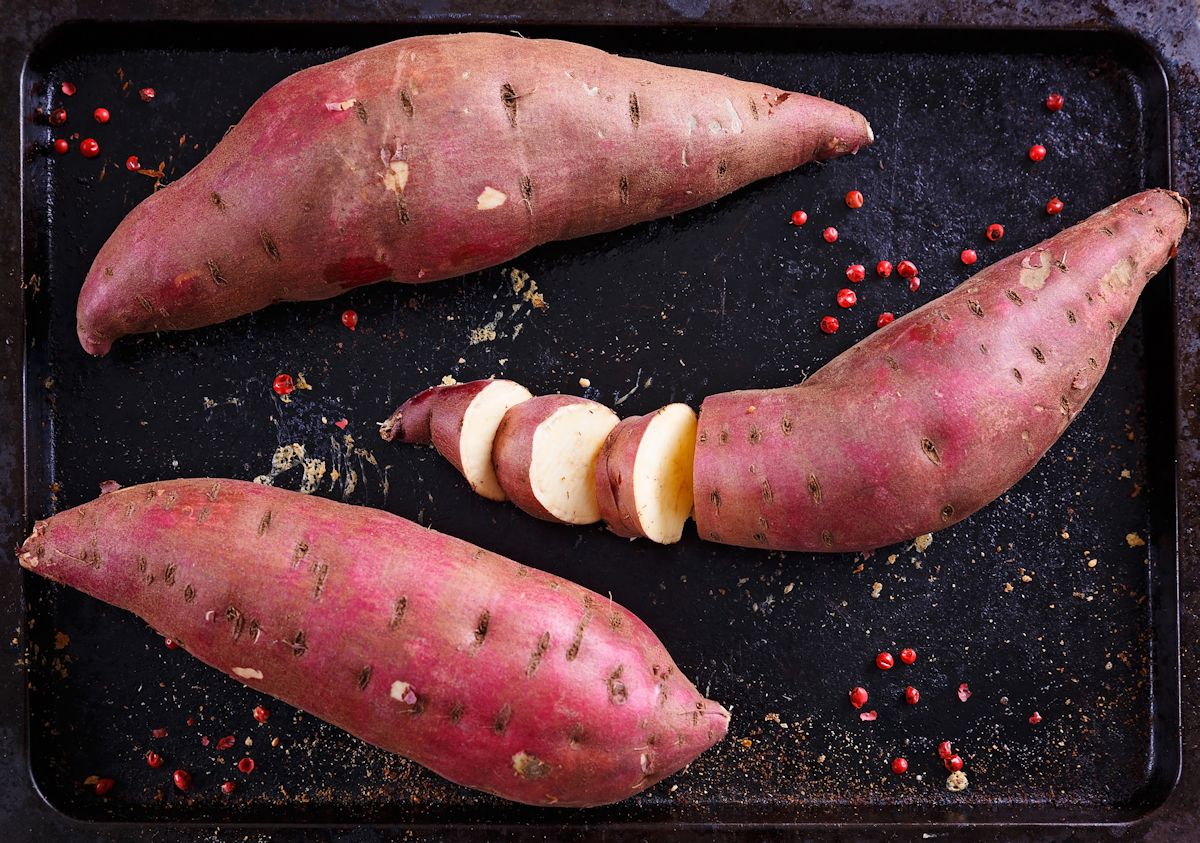
Red potatoes are a fantastic source of vitamin A. Based on a research red potatoes are healthier than regular potatoes. They have more fiber and lower glycemic index. The skin of red potatoes has twice the antioxidants than white potatoes.
The high content of antioxidants can help in reducing free radicals.
11. Red Swiss Chard (Mangold)
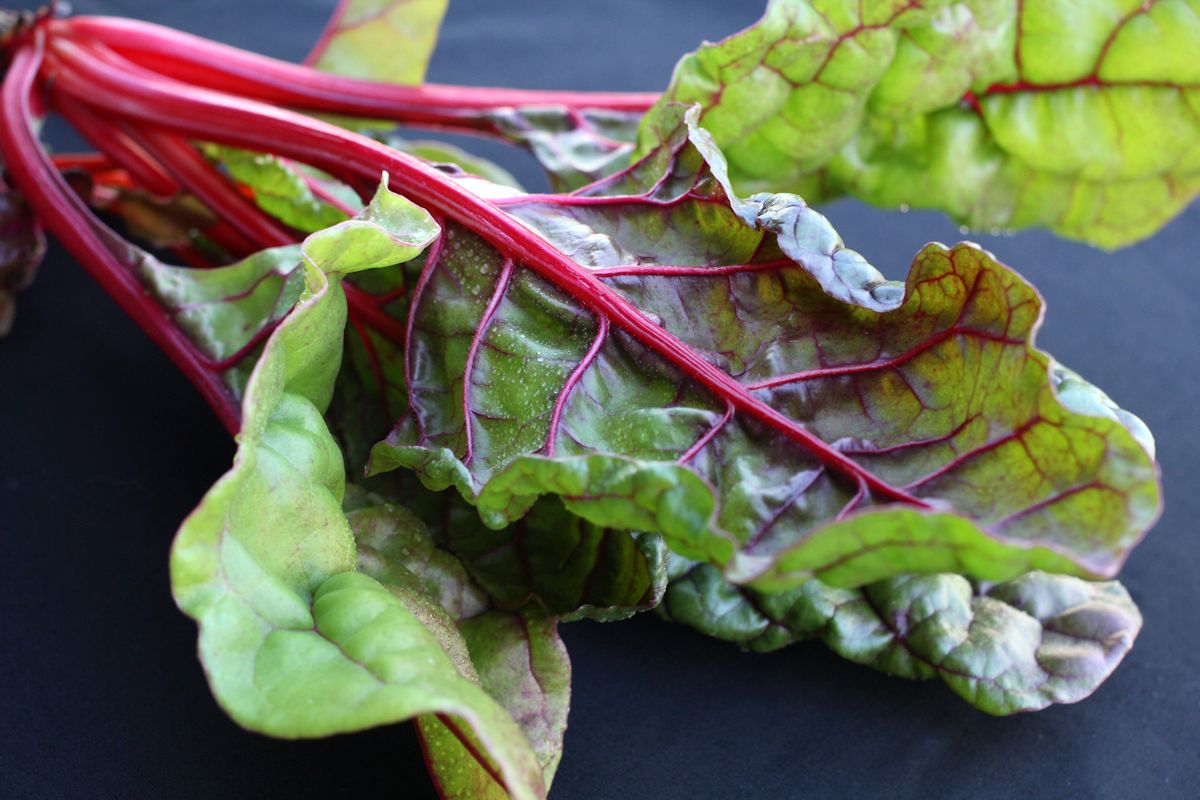
The red swiss chard is a nutrition powerhouse. Only one cup of cooked Swiss chard has 572mg Vitamin K or 636% of the RDV, 306 mg Vitamin A or 60% of the daily value. It’s also rich in Vitamin C (42%), Vitamin E (22%), Iron (22%) and Magnesium (38%).
The high amount of antioxidants help reduce the free radicals from your body and indisputably slow down the aging process. Because of the high content of Vitamin K, it also perfect for maintaining bone health.
The best way to consume them is by boiling the leaves for two minutes to decrease certain acids and to improve the nutrient availability.
12. Red Amaranth
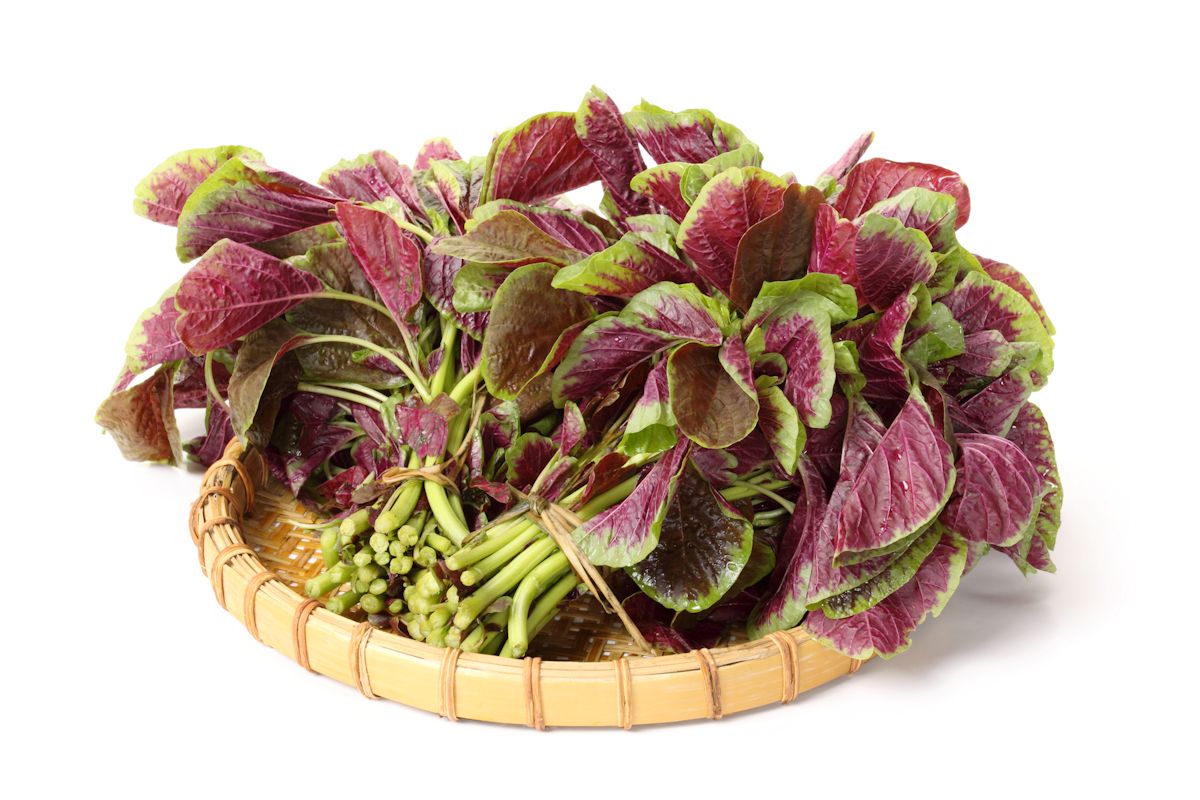
Only 100g of leaf amaranth has 29% of the RDV of iron, 70% of the RDV for Vitamin C and over 97% of the RDV for Vitamin A. The amaranth leaves contain a high amount of antioxidants which are beneficial for maintaining a healthy immune system and decreasing inflammation.
You can add it to your salads or in your green smoothies.
13. Rhubarb
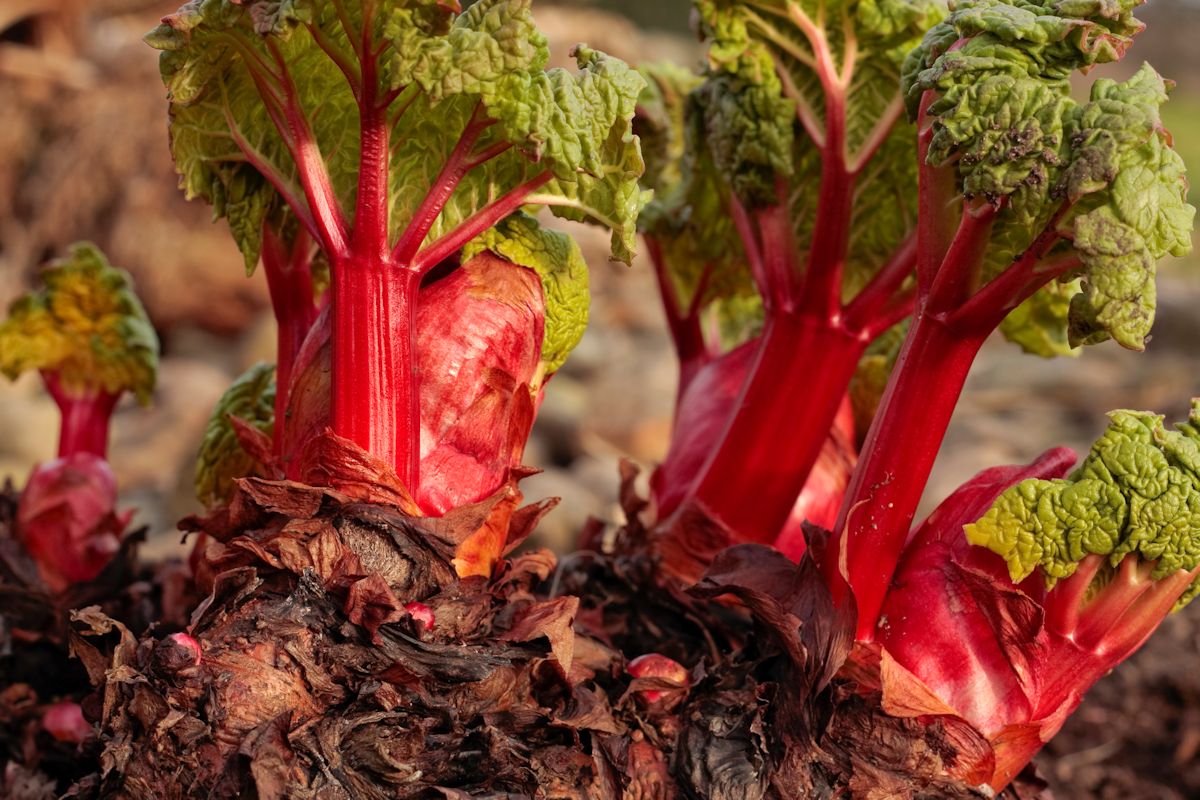
The tart, sweet taste often makes people think that rhubarb is a fruit, but technically it’s a vegetable. The fiber content in rhubarb promotes a healthy and normal digestive system. Because it’s a good source of Vitamin K (35.7 mcg or 45% of the RDV), it can help prevent osteoporosis.
Rhubarb is also high in antioxidants which help in regulating the free radicals and inflammation.
Final Words
Each day we are facing hectic, busy lifestyles with a lot of pressure and demands from our work, society and even our family.
This everyday struggle leaves an enormous mark on the body which leads to lowered immunity, focus, and strength.
Considering all that, it’s essential that you eat fruits and veggies regularly so you can nourish your body with the right nutrients for normal functioning in the not so much normal lifestyle.




